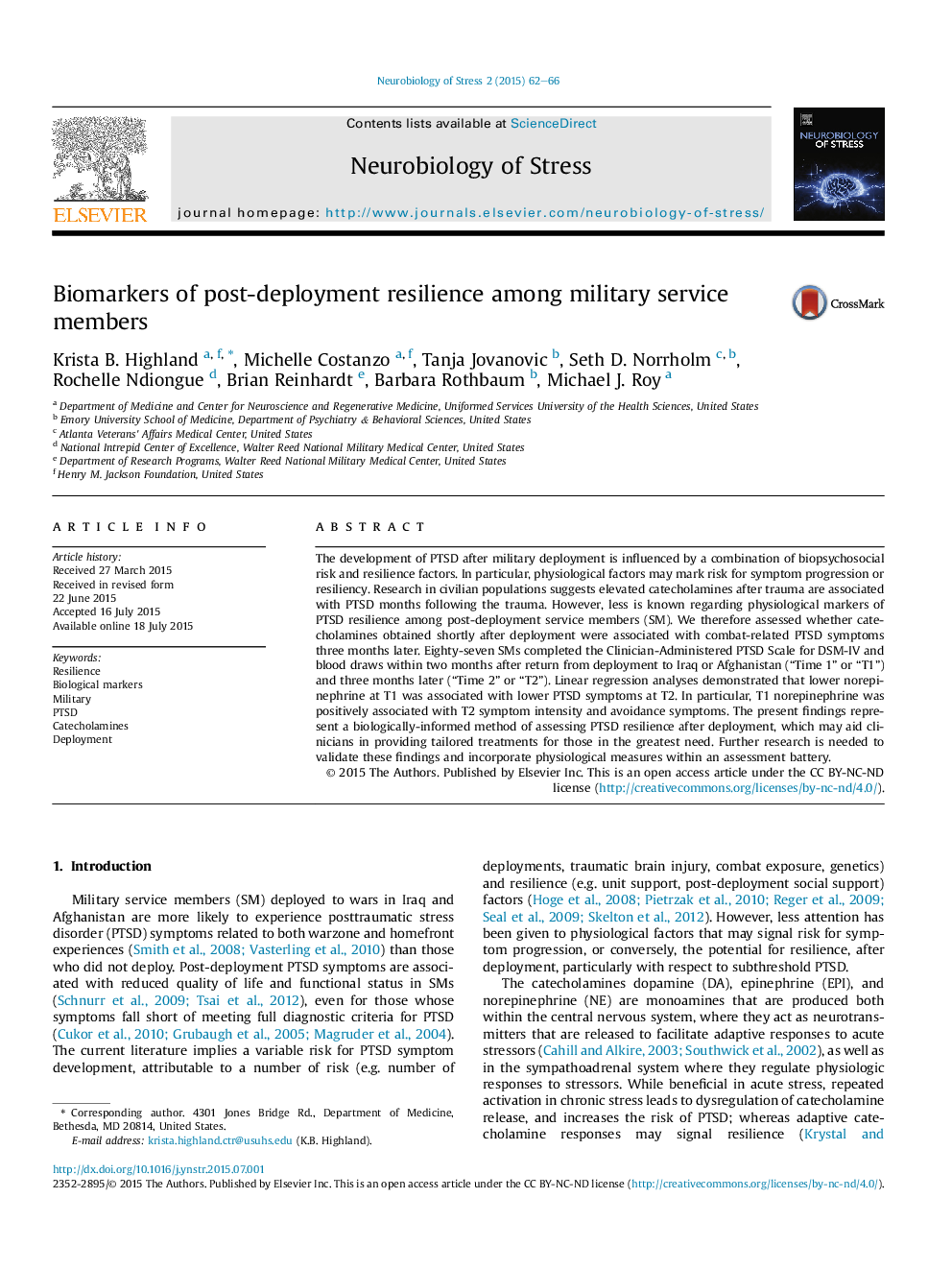| کد مقاله | کد نشریه | سال انتشار | مقاله انگلیسی | نسخه تمام متن |
|---|---|---|---|---|
| 4318538 | 1613197 | 2015 | 5 صفحه PDF | دانلود رایگان |
The development of PTSD after military deployment is influenced by a combination of biopsychosocial risk and resilience factors. In particular, physiological factors may mark risk for symptom progression or resiliency. Research in civilian populations suggests elevated catecholamines after trauma are associated with PTSD months following the trauma. However, less is known regarding physiological markers of PTSD resilience among post-deployment service members (SM). We therefore assessed whether catecholamines obtained shortly after deployment were associated with combat-related PTSD symptoms three months later. Eighty-seven SMs completed the Clinician-Administered PTSD Scale for DSM-IV and blood draws within two months after return from deployment to Iraq or Afghanistan (“Time 1” or “T1”) and three months later (“Time 2” or “T2”). Linear regression analyses demonstrated that lower norepinephrine at T1 was associated with lower PTSD symptoms at T2. In particular, T1 norepinephrine was positively associated with T2 symptom intensity and avoidance symptoms. The present findings represent a biologically-informed method of assessing PTSD resilience after deployment, which may aid clinicians in providing tailored treatments for those in the greatest need. Further research is needed to validate these findings and incorporate physiological measures within an assessment battery.
Journal: Neurobiology of Stress - Volume 2, 2015, Pages 62–66
